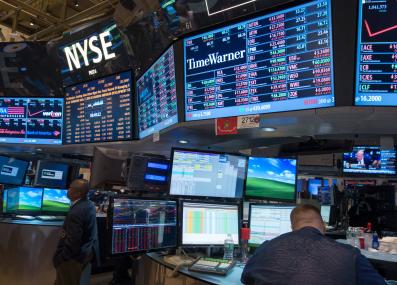Have a question?
If the U.S. limits fossil fuel production at home, will we turn to cleaner sources of energy, or just import more oil and gas?
Supply-side restrictions, like shutting down new oil wells or gas pipelines, tend to lead to more imports and minimal impacts on greenhouse gas emissions—unless paired with other policies that limit demand for fossil fuels.
March 8, 2024
Fossil fuels, and the greenhouse gases they produce, are creating a hotter, more unstable world for future generations. That’s why policymakers concerned about this change have focused on switching from fossil fuels to clean sources of energy—quickly, before our mounting climate pollution causes even more disruption.
There are many policies that could advance that cause, but you can think of them as falling into two broad buckets, and both kinds have their advocates.
One type of policy focuses on the supply of fossil fuels. This includes shutting down gas pipelines, or banning new oil wells. These ideas aim to make fossil fuels scarcer, and thus more expensive.
Policies targeting supply can have a small impact on greenhouse gases or a more significant one, depending on the context.
Shutting down a single coal mine or oil or gas well would likely have little impact on climate change on its own, says Sergey Paltsev, deputy director of the MIT Joint Program on the Science and Policy of Global Change. (Though the effect on local pollution may be large.) As long as it’s cheap enough to do so and policy allows it, imports would most likely replace the lost production—meaning the same amount of fossil fuels are produced and burned. The result may even be more climate pollution, because these fuels are transported from afar, often on fuel-intensive ships.
A more wide-reaching restriction on supply, like, hypothetically, the U.S. banning domestic oil and gas extraction, could do more to reduce greenhouse gases. Still, this depends on the hit to supply being so large that foreign producers cannot easily make up the difference, or not at the same price.
“The impacts will depend on the ability to substitute between different options: between domestic production and imports, between one source of energy and the alternative,” says Paltsev. “Typically, we find that supply-side policies that are introduced in isolation do not lead to substantial greenhouse gas emission reductions.”
An expansive ban on supply would also cause carry-on effects, in the U.S. and abroad, says Paltsev. People working in fossil fuel production would lose their jobs, people would need to spend more for electricity and gas, and companies supplying the U.S. with imported fossil fuels would wield more political power. The impacts of higher energy prices also tend to fall most heavily on the poorest, while the wealthiest can continue to fly on private jets, paying more for jet fuel.
What about the other type of policy? This type aims to lower demand for fossil fuels. Think of tax credits that benefit clean energy, efficiency standards for cars, or "carbon taxes" that charge people for using fossil fuels. These push people to use fewer fossil fuels, either by making them more expensive or making it cheaper to choose clean energy instead.
In this case, foreign production can’t make up the difference: the point is that consumers won’t want as much fossil fuel energy. In a situation where policies focus solely on demand—like a 100 percent clean energy requirement—the impact on greenhouse gases can, hypothetically, be significant.
But there are drawbacks to demand-focused policies too, says Paltsev. Because any policy aiming to reduce fossil fuels has impacts on the economy and real people, he says, “policymakers have to quantify carefully the tradeoffs related to emissions reductions and increased costs.” Additional policies might also be needed to help people afford energy if it becomes more expensive, or to cope with economic changes like the loss of certain energy jobs.
Of course, choosing only supply- or only demand-focused policies is “not really the situation we live in,” says Paltsev. Instead, the U.S. is pursuing both kinds of policies, like tax credits for people to buy electric cars alongside pollution regulations that put restrictions on gas pipelines.
And it’s good to have this mix, says Paltsev, because in the end we’re not targeting supply or demand, but climate-warming greenhouse gases. “Only supply or only demand side policy is not as efficient in comparison to this economy-wide [strategy], where you’re covering both suppliers and consumers and you're covering all sectors of the economy.”
Thank you to Clayton Berardi of Orlando, Florida, for the question.
Submit your own question to Ask MIT Climate
Get the latest from Ask MIT Climate monthly in your inbox










